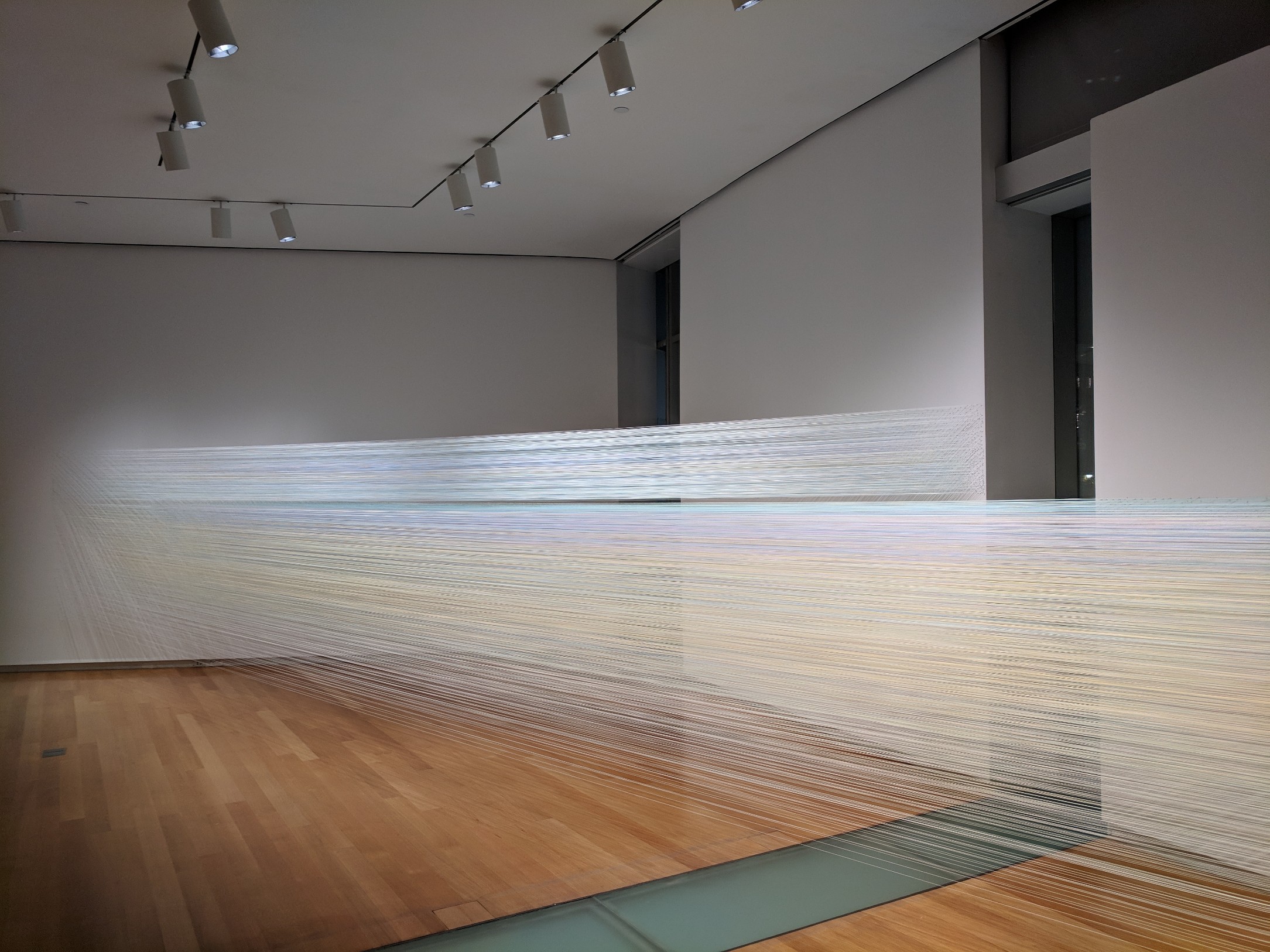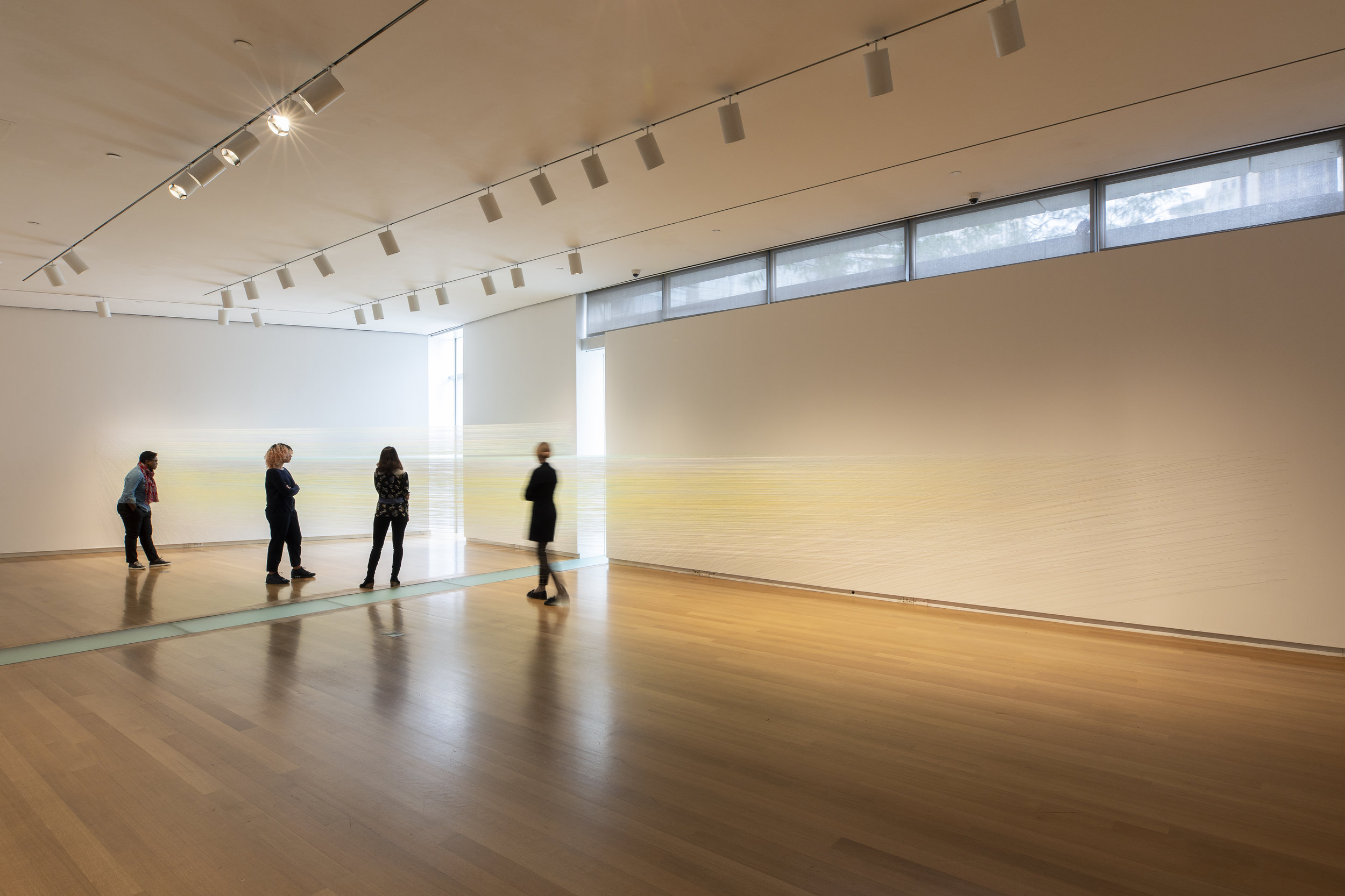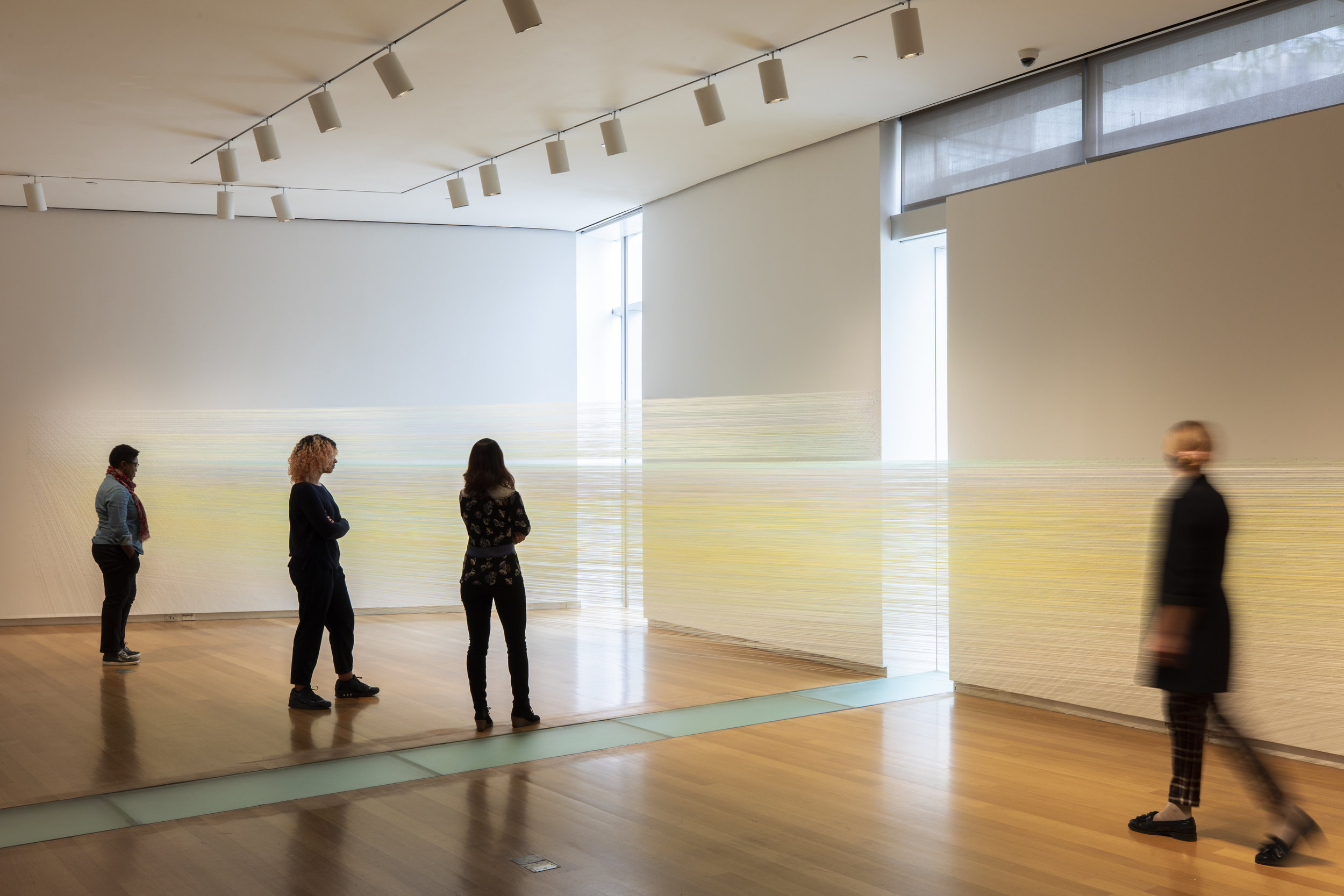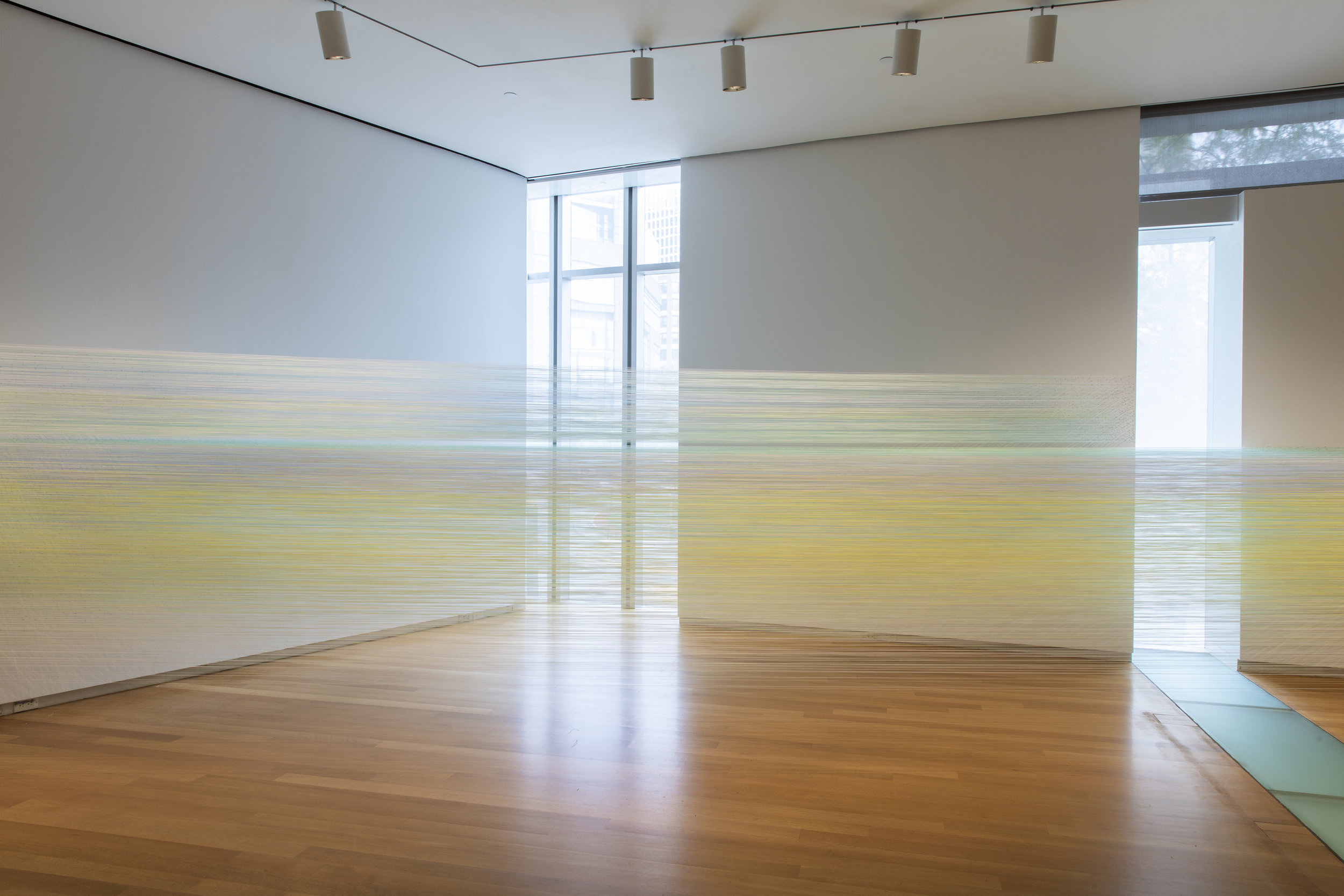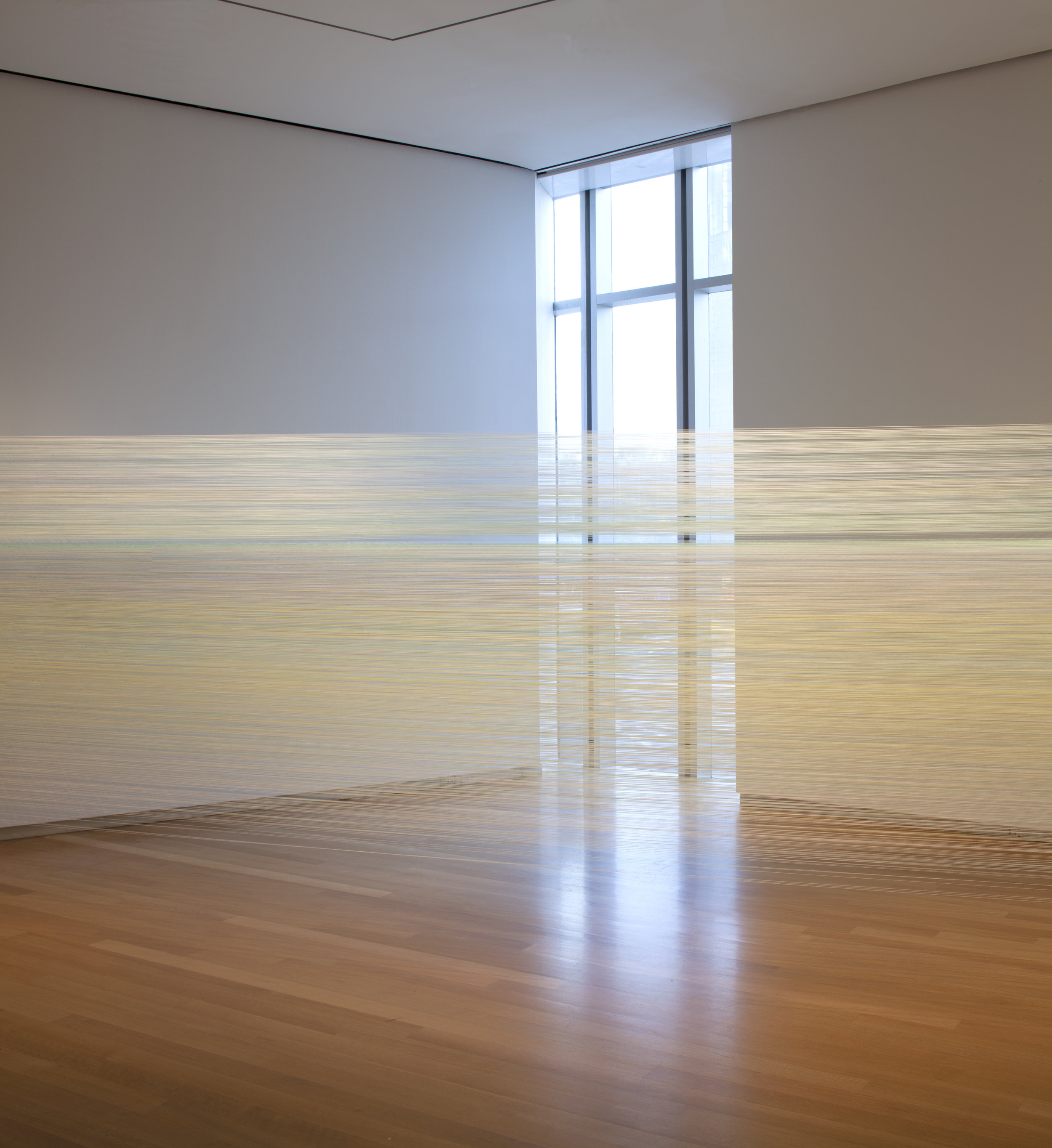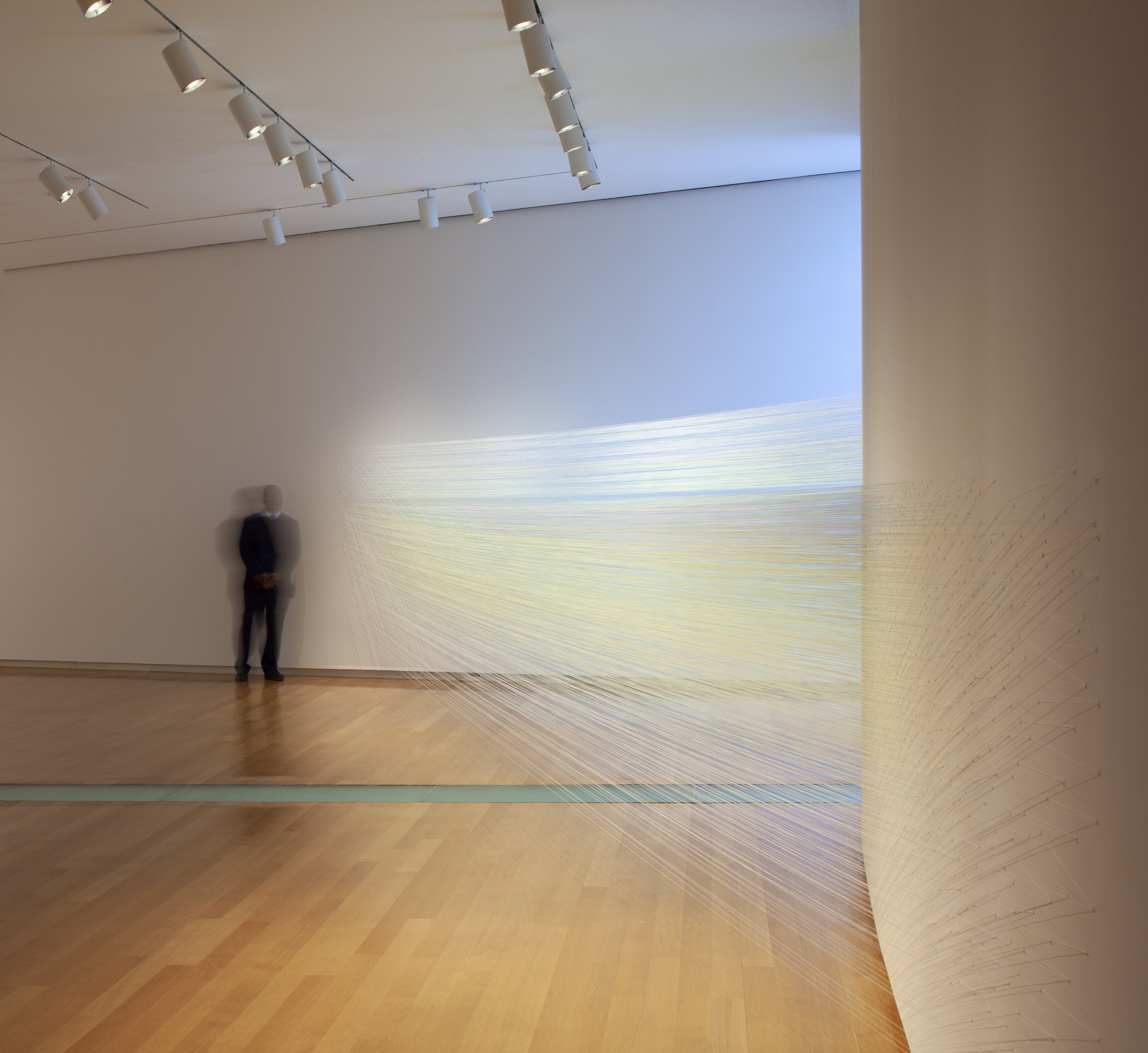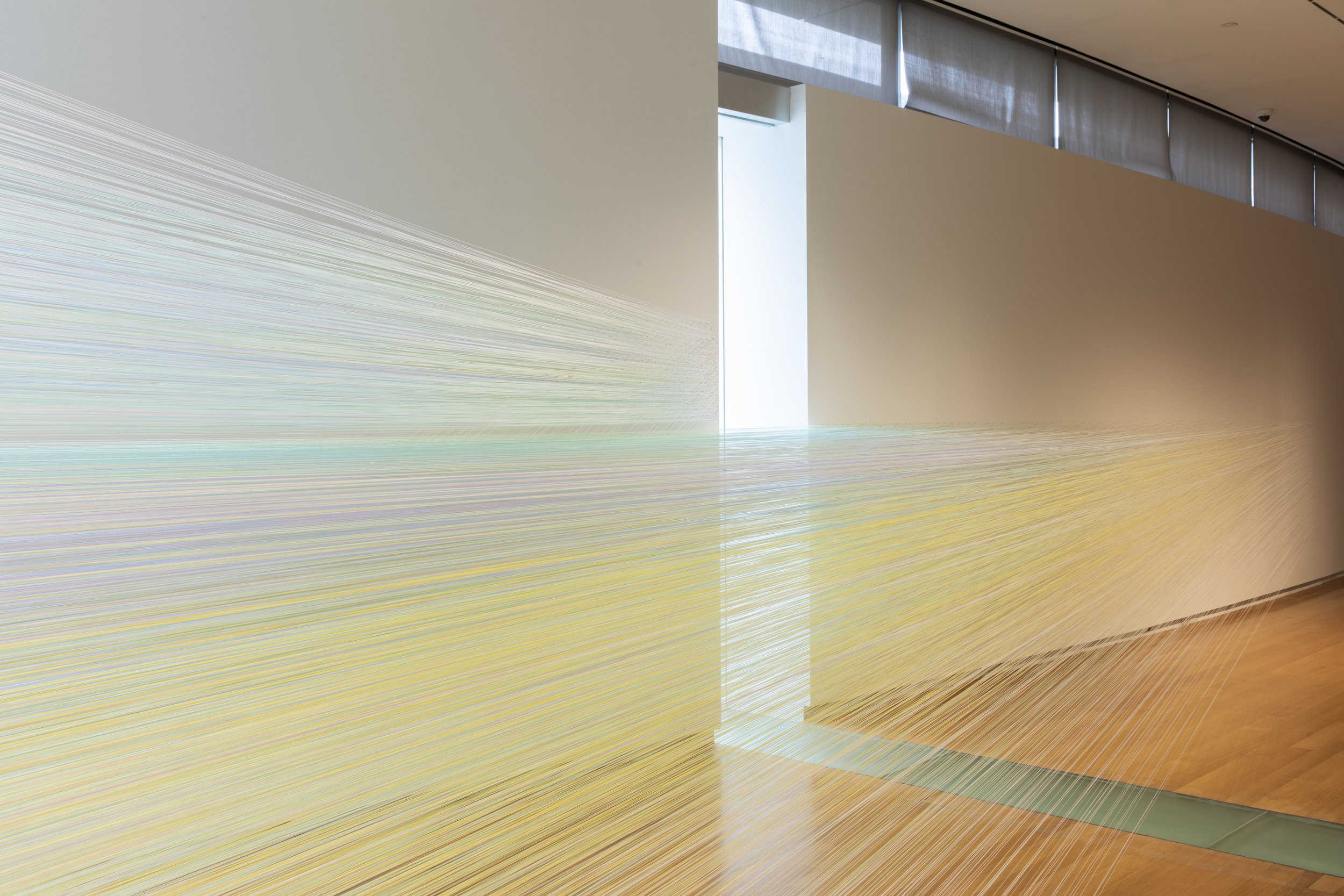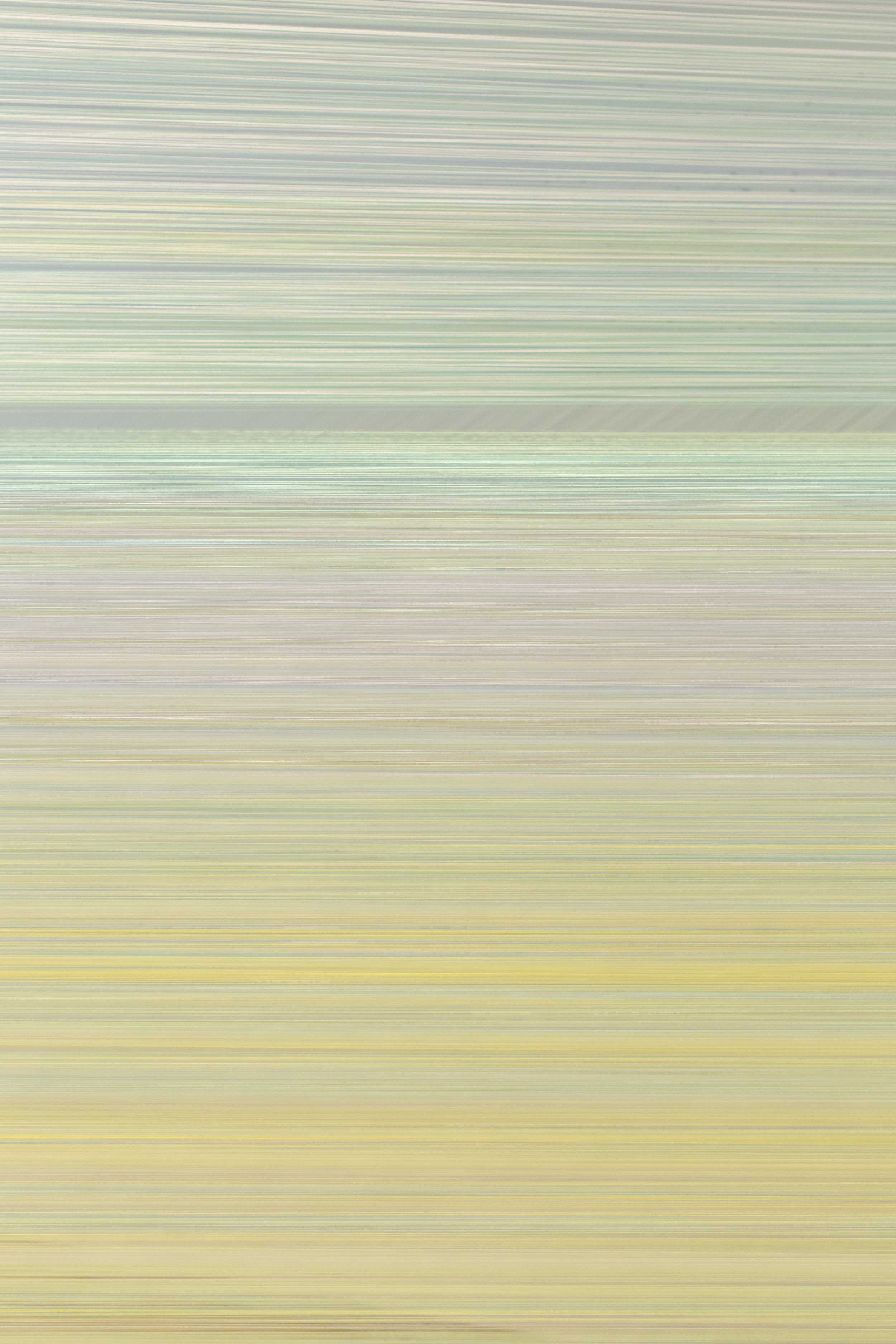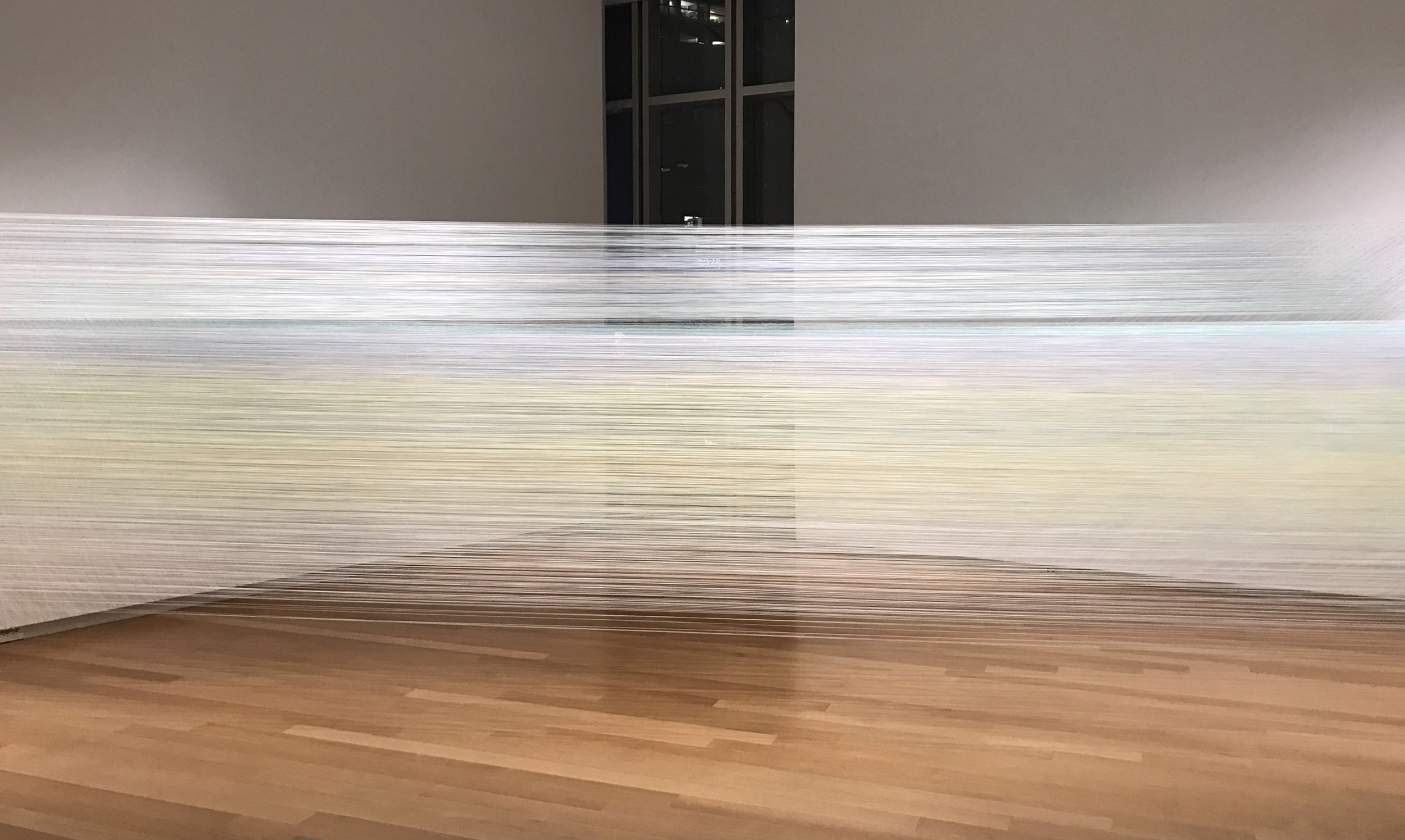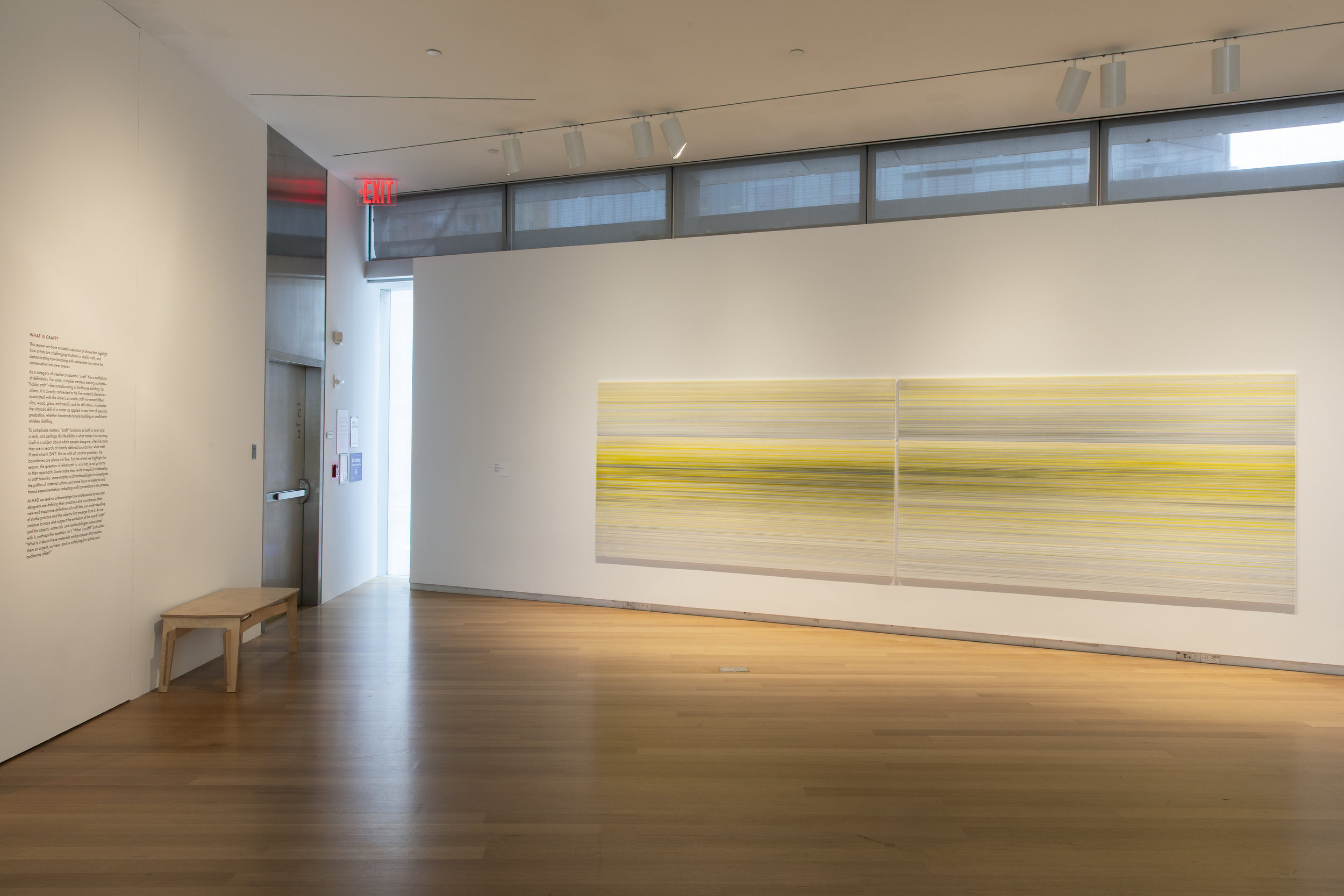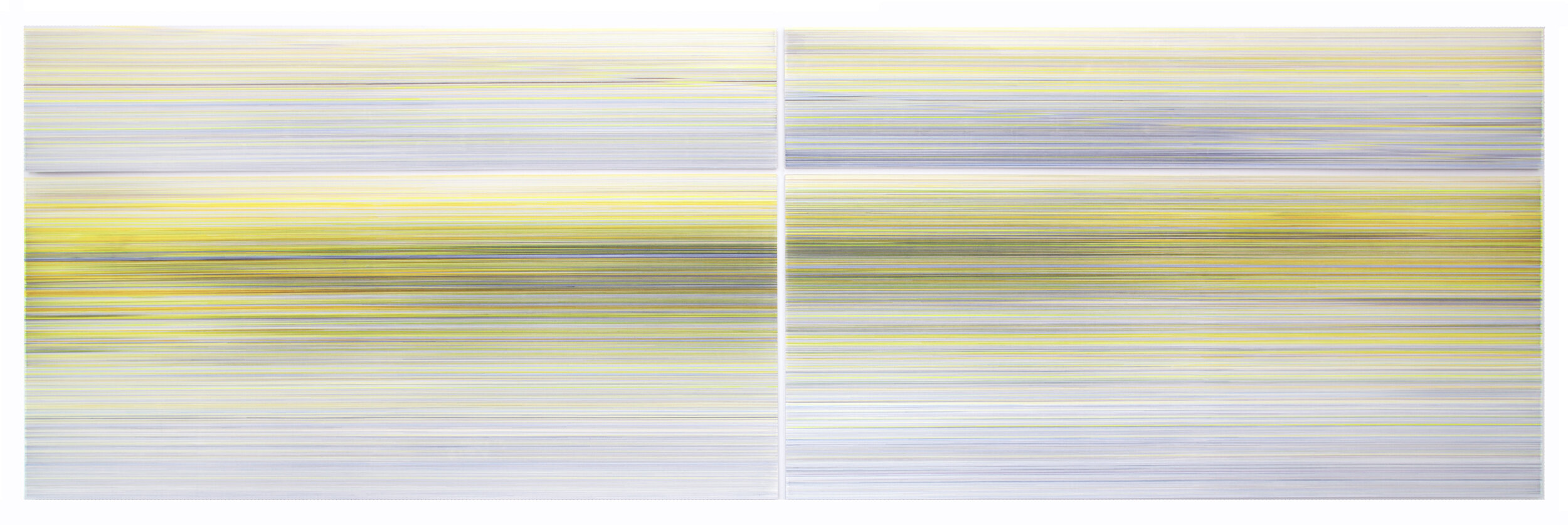the eye’s level
Museum of Arts and Design
New York, New York
October 16, 2018 - March 3, 2019
Curated by Shannon Stratton
exhibition essay by Jeffrey Kastner
No day without a line.
- Medieval maxim
In the preface to his 1753 book The Analysis of Beauty, the artist William Hogarth recounts a tale from Pliny the Elder about the friendly rivalry between two of classical Greece’s greatest painters, Apelles and Protogenes. Paying a visit to the latter’s studio on Rhodes, Apelles found that his contemporary was not at home, and so, writes Hogarth, he “asked for a board, on which he drew a line, telling the servant maid, that line would signify to her master who had been to see him.”[i]As Pliny tells the story, when Protogenes returned, he saw the line—“traced with color … of a singularly minute fineness”—and “instantly exclaimed that Apelles must have been the visitor, for no other person was capable of executing anything so exquisitely perfect.”[ii]Pliny continues:
So saying, he traced within the same outline a still finer outline, but with another color, and then took his departure, with instructions to the woman to show it to the stranger, if he returned, and to let him know that this was the person whom he had come to see. It happened as he anticipated; Apelles returned, and vexed at finding himself thus surpassed, he took up another color and splitboth of the outlines, leaving no possibility of anything finer being executed. … Upon its vast surface it contained nothing whatever except the three outlines, so remarkably fine as to escape the sight: among the most elaborate works of numerous other artists it had all the appearance of a blank space; and yet by that very fact it attracted the notice of every one, and was held in higher estimation than any other painting.[iii]
I introduce Pliny via Hogarth because The Analysis of Beauty(perhaps not surprisingly for an artist best known as a cartoonist and engraver) is an aesthetic treatise built on what is essentially a philosophy of lines, one concerned—much like the work of Anne Lindberg—with how they operate alone and in concert with one another, one engaged with both their epistemological and ontological status. In what is undoubtedly the best-remembered passage in the book, Hogarth even proposed a kind of linear hierarchy that ranked various types of marks in terms of their fullness of expression. At its apex stood the “line of grace,” a serpentine stroke “which by its twisting so many ways, may be said to in close (tho’ but a single line) varied contents,” a richness of diversity that “cannot be express’d … without the assistance of the imagination.”[iv](It’s this sort of mark that Hogarth, perhaps predictably, imagines the two Greeks must have been employing.) Meanwhile, at the bottom of his roster languished straight lines, which, he wrote curtly, “vary only in length, and therefore are least ornamental.”[v]In Lindberg’s endlessly inventive and elegantly rigorous accounting, however, straight lines—drawn on board in black and colored pencil or in space with delicate, hued filament; lines of minute fineness splitting other lines with exquisite imperfection—are also figures that court imagination, inscriptions that produce dazzling variety, that delineate and enclose an improbably rich catalogue of perceptual and affectual contents. For her, it is the straight line, and a patient, probing exploration of the wide possibilities available within its constraints, that is the path to grace.
Lindberg’s studio is set in the rolling farmland of the Hudson River Valley. Her workspace is high-ceilinged and light pours in through a series of long vertical windows that open onto the surrounding countryside, giving the room the feeling of an architectural zoetrope of sorts—the world around her spinning past beyond the selected framings, finding its way into her work through the orderly gaps in the building’s envelope. On a recent visit, her usual complement of pencils—every color imaginable, and every hardness as well, to produce the variety of magnitudes that make up her drawings—was joined by dozens of spools of colored string, the primary material of her installations. These two aspects of her practice and the two elements of her exhibition here, lines orchestrated in two and three dimensions, share certain obvious formal qualities. Systematic, reduplicative, visually incantatory, each mode involves the laying down of one single discrete line after another until a kind of critical mass is reached where the oscillation between the condition of the work as a whole and that of its constituent elements melts into a zone of perceptual indeterminacy. Together, they constitute what anthropologist Tim Ingold identifies as the two predominant taxonomic classes of line—the trace and the thread—but what is perhaps less immediately available to the viewer seeing the work for the first time is how each relates to the artist’s body and its movement, and specifically to walking, a touchpoint for Ingold’s consideration of the line, as it has been for other thinkers.[vi]“The subject of walking is, in some sense,” writes the cultural critic Rebecca Solnit, “about how we invest universal acts with particular meanings,” and Lindberg’s steps—from a point on one wall to a point on another as she extemporaneously weaves her luminous cloudlike installations; back and forth before the colossal custom-made wall-mounted drafting table on which she creates her drawings—leave traces of meaning as autobiographical as memoir, or as she herself has observed, self-portraiture.[vii]
The fundamental question with any work of art—namely, how to seeit properly—is productively complicated in encounters with Lindberg’s work. Each of the drawn lines, with their variations in color, width, and intensity, is an emphatically discrete artifact—indeed, Lindberg typically begins and ends them before the edge of the surface on which they are made, emphasizing their individuality and handmade contingency. So too does she foreground the mechanics of her spatial weavings, anchoring the threads to the walls at their point of turnaround using staples whose utilitarian physicality is placed into conversation with the mist-like immateriality of the works in their integrated totalities. Are they many things or one thing? Should one concentrate on the individual elements or on the total effect? As I have thought with Lindberg’s work these last few weeks, I have often returned to the image of the rainbow—a phenomenon that is dependent entirely on the perspective of the viewer, a concatenation of millions of glancing glints of light that resolves into numinous form at once vividly there and not actually there at all.[viii]It’s fitting perhaps, then, that for the illustration on the frontispiece of the first edition of his book, Hogarth chose to place his line of grace inside what to all appearances would seem to be a prism.
[i]William Hogarth, The Analysis of Beauty (London: Printed by J. Reeves for the author, 1753), p. xviii. Emphasis and punctuation in original.
[ii]Pliny the Elder, The Natural History, vol. 6, trans. John Bostock and Henry Thomas Riley (London: Henry G. Bohn, 1857). See Book 35, Chapter 36, “Artists Who Painted with the Pencil,” p. 257; spelling modified. The maxim that serves as this essay’s epigraph is said to have been coined in reference to Apelles’s daily devotion to his drawing practice.
[iii]Ibid.
[iv]Hogarth, op. cit., p. 39.
[v]Ibid., p. 38.
[vi]See Tim Ingold, Lines(London: Routledge Classics, 2016), p. 42 and passim.
[vii]Rebecca Solnit, Wanderlust: A History of Walking(New York: Penguin Books, 2000), p. 3.
[viii]My thinking on rainbows and looking is indebted to Philip Fisher’s fascinating study, Wonder, The Rainbow, and the Aesthetics of Rare Experiences(Cambridge, MA: Harvard University Press, 1998). On the subjective immateriality of the rainbow, see especially pp. 33-37.
